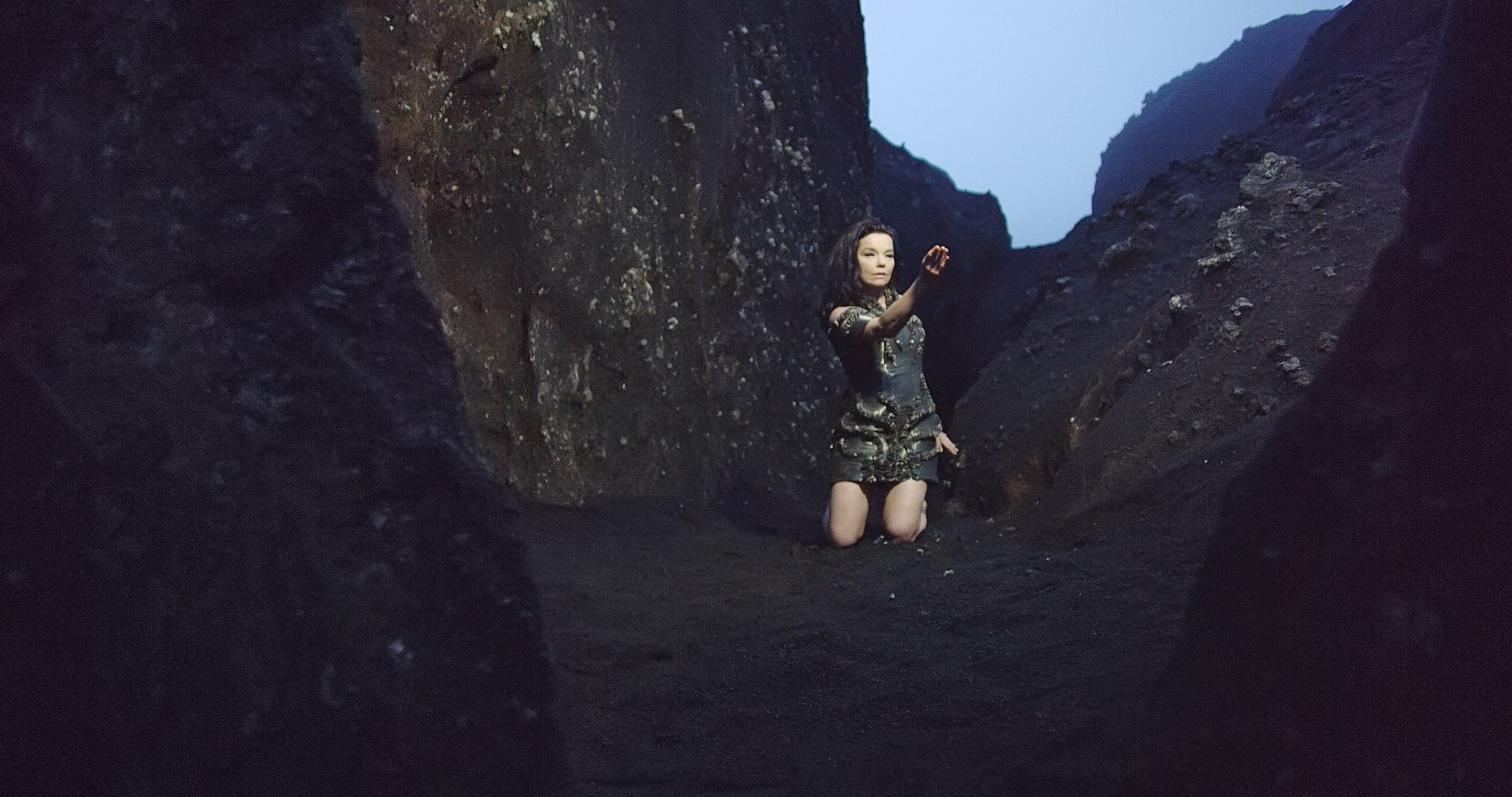Take a virtual reality tour through Iceland with Björk’s newest album, Vulicura
From a dark cave to the vast, rock-covered beaches of Iceland—and all through the realm of music and digital space—that’s exactly what Björk Digital is all about. It is an exhibition that takes the term “audiovisual” to a whole other level.
Björk Digital allows the audience to experience Björk’s music in a unique, singular way. The highlight of the show resides in the virtual reality (VR) installations that make up the biggest part of the exhibition. The Montreal exhibition is the North American premiere of the project, which previously toured Sydney, Tokyo and London.
Each of the five VR installations feature a song taken from the Icelandic singer’s latest album, Vulnicura. They are more than simple music videos: each work offers a new perspective on the artist’s music that is simply impossible to experience anywhere else. For the most part, the installations are each about nine minutes long and can welcome 25 visitors at once.
“Black Lake” opens the exhibition. Using the Oculus Rift, a head-mounted VR display apparatus, and headphones, this installation takes the audience through the depths of a dark cave, where two screens are mounted against opposite walls of the cave. Each screen displays a different angle from which we can see Björk singing and dancing with disheartening emotion—at first sharing the same cave space, then moving to the outside world. “Black Lake” is a good piece to start with: it familiarizes the audience with Björk’s music, without it being overwhelming or too unsettling. The piece is almost peaceful, setting the mood for what is yet to come.
The following installation, “Stonemilker,” consists of a total 360-degree VR experience. In other words, we are immersed in the video. We can see the beach in which the video is set in no matter direction we turn. That aspect is explored heavily in the music video—as the song progresses, Björk keeps moving around the viewers, sometimes even duplicating herself and appearing at two, three or four places at once. Each of these representations of the singer are singular and do not imitate each other in movement—it becomes almost confusing at times, as you don’t know where to look and are afraid to miss something.
The last piece, “Family,” directed by Andrew Thomas Huang, is premiering in Montreal and distinguishes itself from the rest of the VR pieces in the project. The experience is different from the previous four, as “Family” is experienced in pairs rather than groups, and requires the viewer to be standing rather than sitting. “Family” is an interactive VR experience. Viewers are invited to walk around the space and grab things as they come to them, all while the landscape changes and the music progresses. This final piece is, without a doubt, the best of the five.
Björk Digital doesn’t limit itself to VR installations, though. The exhibition also presents Biophilia, a project which involves an app on which Björk’s album of the same name is featured along with educational activities relating each of the 10 songs to a scientific concept. Finally, the exhibition closes on Björk Cinema, a room where visitors are invited to sit on the floor and watch a continuous series of Björk’s previous music videos.
The exhibition, Björk Digital, is one of the various events being held in the city by the Red Bull Music Academy from Sept. 24 until Oct. 24. The exhibition is will be held at the DHC/ART Foundation for Contemporary Art until Nov. 12.




